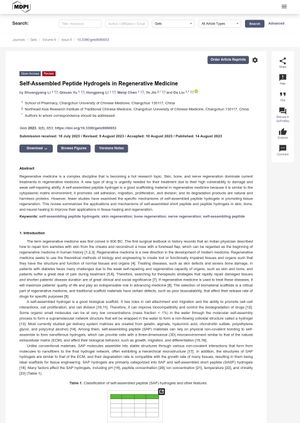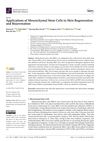Self-Assembled Peptide Hydrogels in Regenerative Medicine
August 2023
in “Gels”

TLDR Peptide hydrogels show promise for healing skin, bone, and nerves but need improvement in stability and compatibility.
The document discusses the use of self-assembled peptide hydrogels in regenerative medicine, particularly in skin, bone, and neural healing. These hydrogels mimic the cytoplasmic matrix environment, promoting cell adhesion, migration, proliferation, and division. Self-assembled short peptide (SASP) hydrogels have been used in skin regeneration, tissue engineering, drug release, hemostasis, and antimicrobial action. SASP hydrogels have also shown potential in bone regeneration, enhancing key osteogenic markers. In nerve regeneration, they enhance the adhesion of neural stem cells and their differentiation into neuronal cells. However, they have limitations including poor stability, biocompatibility, and mechanical properties. The document also highlights the potential of these hydrogels in treating neurological disorders and injuries, promoting neural growth after peripheral nerve injury. Despite promising results, further studies are needed to optimize these peptides for broader applications in tissue engineering.
View this study on mdpi.com →
Cited in this study
research Release systems based on self-assembling RADA16-I hydrogels with a signal sequence which improves wound healing processes

research Applications of Mesenchymal Stem Cells in Skin Regeneration and Rejuvenation
Mesenchymal stem cells show potential for skin healing and anti-aging, but more research is needed for safe use, especially regarding stem cells from induced pluripotent sources.

research Self-assembling peptide hydrogel scaffolds support stem cell-based hair follicle regeneration
Peptide hydrogel scaffolds help grow new hair follicles using stem cells.